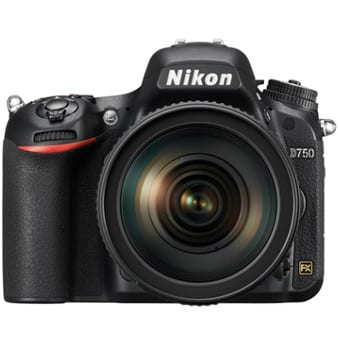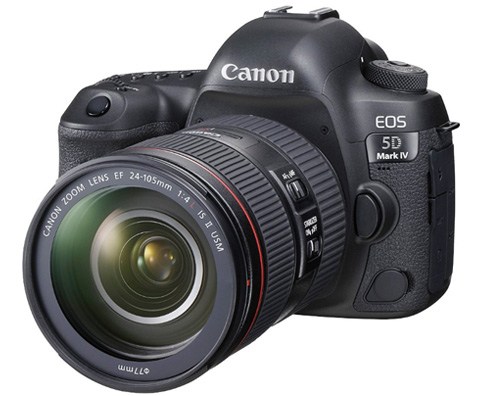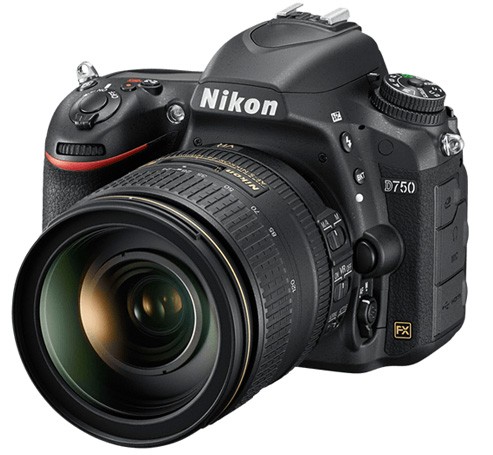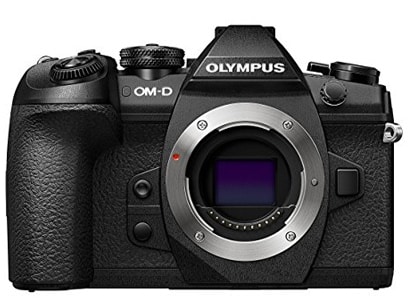Wedding photography is all about preparation.
How many cameras and lenses do you need? What about the batteries, tripods and so on?
Plus, you can spend anywhere from 3 to 20 hours shooting a wedding, so you better choose the right gear that can help you get amazing shots.
Mirrorless or DSLR for Weddings?
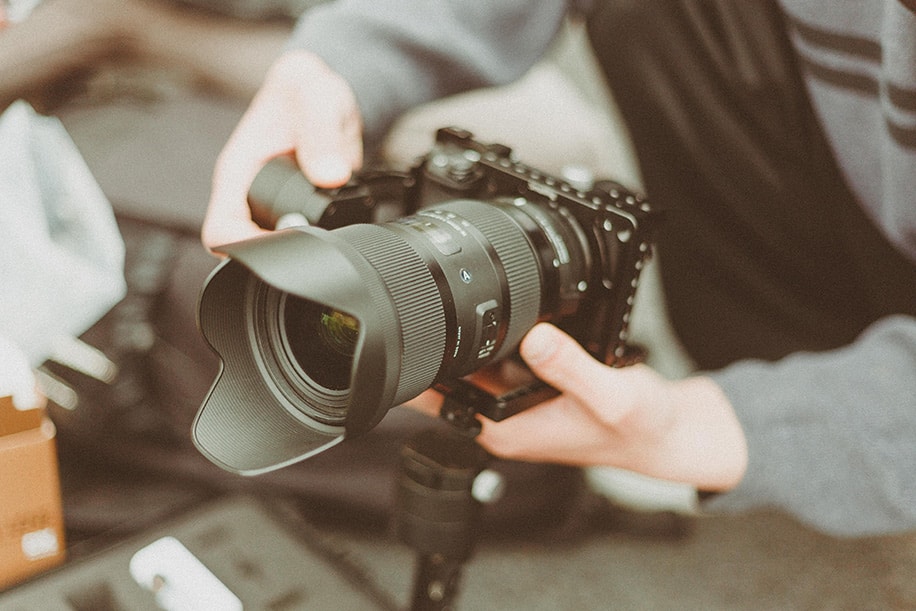
As of 2019, both camera systems are absolutely perfect for wedding photography.
Why Mirrorless?
These cameras are lighter, smaller, and just generally more compact. Because they have no mirror inside, they are also much more silent, which is a big plus whenever you don’t want to stand out too much (weddings are a perfect example).
With plenty of exciting models and features, as well as new lenses coming out all the time, choose a mirrorless camera if you want to stay as light as possible.
Why DSLRs?
The good old, bulky cameras are still a top choice for wedding photography.
First of all, their batteries last much longer (from 2 to 3x longer). You should still carry a few backup batteries with you, but you will definitely be using them a lot less.
Second, the lens selection is much bigger. To be honest, unless you are looking for some extreme lenses, mirrorless cameras already have many perfect choices for wedding photography (both zooms and primes). It all comes down to your style though.
7 Best Cameras for Wedding Photography
If you decide to buy anything after clicking on our Amazon links, you automatically support us. It’s what allows us to write guides such as this one.
We went through all DSLRs and mirrorless cameras, and included the best from both worlds.
If you want to do wedding photography professionally, you should invest in something that can last for years and you will know every single function of the camera.
1. Nikon D850
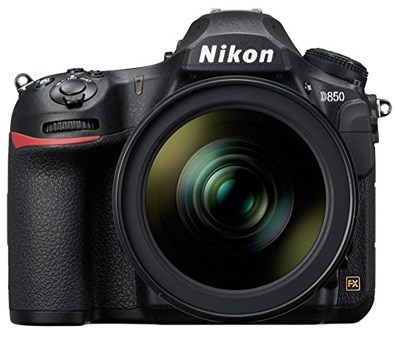
The Nikon D850 is a serious workhorse, and a camera that almost no photographer could say no to.
Why is it good for weddings?
First, it’s got a big 45MP full frame sensor so printing large or cropping is an easy task. Since many wedding photographs will actually be printed, this is definitely an area where more is better.
The native ISO range goes from 64 to 25,600, but can expand up to 32-102,400. Noise performance is said to be increased by 1 stop compared to the D810, but don’t be surprised to get noisy results if shooting at such high levels.
For such a high megapixel camera, the noise performance in darker avenues are excellent!
Speed wise, it shoots 7 frames per second but that can turn into 9 frames if you use the Nikon MB-D18 battery grip. Considering this is a megapixel monster, 7fps is very quick for a DSLR that can do all of this. The buffer size is very impressive, allowing you to take up to 51 (14-bit) RAW files, compared to 28 on the previous D810 that had less pixels. JPEG wise, it’s next to unlimited.
The D850 uses the exact same AF system as found in the D500 and more expensive D5. This means 153 points, 99 of those are cross-type. It’s very good at locking onto your target, even in low light.
Video wise, it can record 4K at 30/25/24p, and has a nice touch-screen tilting 3.2″ LCD monitor with 2.35 million dots. In order to store such huge files, the D850 has 1 x SD (UHS-II compatible) slot and 1 XQD for when you really need that speed. To make it even better, you’ve got a USB 3.0 connection and a 1840 shots rated battery life. Whatever Nikon is doing in the battery department is amazing.
You can buy it at Amazon or see more reviews here.
2. Canon EOS 5D Mark IV
The Canon EOS 5D Mark IV brings plenty of photo and video improvements over its 2012 predecessor, the 5D Mark III.
Why is it good for weddings?
First is the full frame sensor, now featuring 30 megapixels compared to 22MP. Both resolutions are pretty high and more than what most will ever need, but the extra amount will be useful for wedding and landscape work, as well as large prints and cropping without losing much quality. The native ISO has slightly increased (to 32,000), but they both stop at 102,400. If you’ve got the 5D III, the difference in high ISO is not worth the extra price (assuming that’s the only thing you want to upgrade for).
If you’re more into action and sports, you’ll be glad to know that the camera is capable of shooting at 7 frames per second, which is quite impressive for a 30MP full frame DSLR. While it uses the same 61-AF point system as the 5D III, the points are spread wider which is helpful when composing the shot.
The biggest improvements come in the video department, which the 5D line is famous for. The 5D IV records 4K videos at 30fps, Full HD at 60fps and HD at 120fps. As with all their more advanced cameras, the 5D IV now features Dual Pixel AF for fast and accurate video focusing. Unfortunately, the DCI 4K video is done with a 1.64x crop factor and there’s nothing you can do about it.
The LCD size is the same at 3.2″, but the fixed screen is now touch-screen in both live view and menus. For quickly sharing the shots, the 5D IV features built-in WiFi and GPS.
You can buy it at Amazon or see more reviews here.
3. Sony A7 III
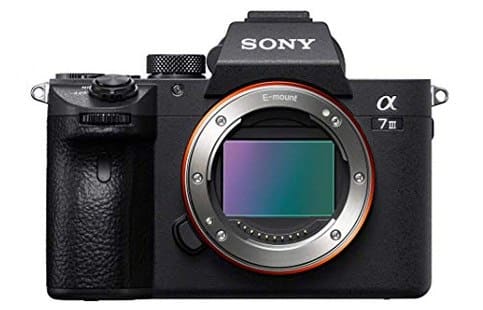
The Sony A7 III is a fantastic deal for the price. It’s like you took the best from every Sony full frame camera and put it in an affordable body.
Why is it good for weddings?
Just like the more expensive A9 we usually recommend, the Sony A7 III has a 24MP sensor and a whopping 693 AF point system. These two features together make the camera perfect for any imaginable scenario; portraits, studio, extreme sports and of course wedding photography. The dynamic range, colors and detail of the A7 III’s sensor are excellent for the price.
It can shoot 10 frames per second and has a very good buffer size with 177 JPEG shots and 89 RAW. You can take pictures for almost 17 seconds before the buffer fills, so make sure you get yourself some good memory cards. The A7 III has 2 x SD slots, the first one supports UHS-II speeds. You can see our A7 III card guide here.
Just like its more expensive siblings, it features a 5.5 axis built-in stabilization that you can always count on, a 4K video recording mode at 30p and ISO range up to 204,800. For low light/indoor shooting or just no-flash photography, it’s high ISO performance is very well handled.
If you want to record videos, you’ll be happy to know that the A7 III can comfortably record 4K (1.2x crop) at 30fps and even 1080p at 120fps for some amazing slow motion clips. Because of the new image processor, videos shot at higher ISO should look better now. One excellent addition is the touch screen capability that allows you to focus/operate the camera simply by pressing anywhere on the screen. This is slowly becoming a standard for all cameras, regardless of their price.
For transferring images, the Sony A7 III finally has a USB 3.0 port. To top it of, you’ve also got an AF joystick on the back of the camera so you can choose your focus point/group quicker, while the battery lasts up to 710 shots compared to 390 on the older models.
The Sony A7 III has the perfect mix of features and low price, especially for a full frame camera. It’s the ideal travel camera that can also be used professionally for any scenario imaginable. As we mentioned, whether it’s concerts, weddings, studio portraits, landscape or wildlife, you can count on it. Make sure to check out our best lenses for the A7 III.
You can buy it at Amazon or see more reviews here.
4. Nikon D750
If we had to pick one full frame DSLR that is brilliant for the money, we’d go with the Nikon D750.
Why is it good for weddings?
The resolution is the same as with the D610 at 24.3 megapixels, but the native ISO sensitivity is 1 stop higher (12,800). It also expands up to 51,200, and the D750 simply shows more detail.
For wedding photographers on a tighter budget, the D750 really gives you the best bang for your buck. If you don’t feel confident enough to get one of the more expensive models, or you’d rather spend more on lenses, this is the one true model we recommend.
Thanks to the Expeed 4 processor, it shoots at 6.5fps compared 6fps, but the biggest improvement of the D750 is in its newer auto focus system. With 51 AF points (15-cross type) and a detection range of -3 to +19 EV (D610 is at -1) it’s excellent for sports and wildlife, let alone weddings.
Nasim at PhotographyLife compared the buffer to the similarly priced FX models and found out it’s just a tad better than the D610; see the comparison here.
What we also miss on the D750 is 1/8000 shutter speed, but instead both cameras can only shoot at 1/4000.
If video matters to you, you’ll be happy to know the D750 records Full HD at 60fps, has a microphone port and features a tilting 3.2″ LCD screen with 1,229,00 dots. Unlike the D610, it also has a built-in WiFi and even manages to get more shots with a single battery charge; 1,230 vs 900.
You can buy it at Amazon or see more reviews here.
5. Sony A7R III
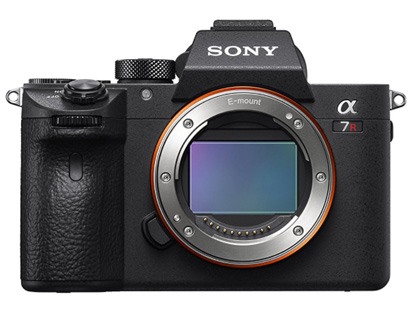
The Sony A7R III is a camera that delivers in every department.
First, it’s got a monster 42.2MP sensor, just like its predecessor. However, the A7R III has an improved image processor, which makes this 42 megapixel sensor perform better in low light (maximum ISO of 102,400). With such a high resolution, the entire Sony A7R line continues to be a perfect choice for landscape, studio, commercial and portrait photography.
Second, the A7R III can shoot 10 frames per second. That’s blazing fast, especially for a camera with so many megapixels. Many other models can’t come close, even with less pixels, although this is a benefit of the mirrorless technology. Because of the 10 frames per second, you can use it for sports, action and wildlife, and expect a lot of different shots to choose from.
These 2 improvements alone would be worth the higher price tag, but there are a lot more features to the camera. It’s got 425 vs 399 contrast AF points and focuses a lot faster, especially in low light. The built-in 5-axis image stabilization has been improved and now helps up to 5.5 stops, instead of 4.5. As you can see, the A7R II was great, but the new model is even better.
If you want to record videos, you’ll be happy to know that the A7R III can comfortably record 4K at 30fps and 1080p at 120fps. Because of the new image processor, videos shot at higher ISO should look better now. One excellent addition is the touch screen capability that allows you to focus/operate the camera simply by pressing anywhere on the screen. This is slowly becoming a standard for all cameras, regardless of their price.
For transferring images, the Sony A7R III finally has a USB 3.0 port. When a camera has 42MP, the files it creates are huge, so you’ll really want fast transferring in this case. Speaking about files, it now features 2 x SD memory card slots (one supports UHS-II speeds). To top it of, you’ve also got an AF joystick on the back of the camera so you can choose your focus point/group quicker, while the battery lasts up to 650 shots compared to 390.
To sum up, the A7R III is not the cheapest camera, but if you’re looking for the absolute best in almost every department, you will love it, especially if high megapixel count is important.
You can buy it at Amazon or see more reviews here.
6. Olympus OM-D E-M1 II
The Olympus E-M1 II is the most advanced Olympus up to date. Unlike Fuji and Sony, Olympus uses Micro Four Third (MFT) sensors in their mirrorless cameras. Instead of a 1.5x crop factor, it’s 2x, so any lens you mount has a field of view that’s twice as long as if you would mount it on a full frame camera.
Why is it good for weddings?
Its smaller sensor is actually a disadvantage, because any lens you put on will act as if it is 2x longer. Put on a 35mm lens, and it will give you the same field of view as a 70mm lens on all other models in this guide.
How to counter this unwanted effect? You simply buy wider than usual lenses, which Olympus has made plenty of, and your results look the same.
The biggest advantage of the 20 megapixel Olympus OM-D E-M1 II is its size. It weighs a mere 20.2 oz (574g) with the battery, mainly because of that small sensor we mentioned. The E-M1 II is weather-sealed and up to standards of any outdoor photographer, so no need to hide when it starts, snowing or when the temperature drops.
What we really love about Olympus is their in-camera image stabilization (up to 5.5 stops). It makes the E-M1 II a much better choice for shooting on the go compared to cameras without it, simply because you don’t need to carry a tripod or raise the ISO when shooting in low light situations. Naturally a tripod is always the best choice for sharp results, but the built-in IS is something we all want in a camera. It works very well for video too, otherwise your footage may look shaky if you don’t have any support.
Speaking about video, it offers DCI 4K at 24p, a headphone and microphone jacks and of course the built-in 5-axis stabilization. Unfortunately Full HD video looks soft, so if you’re going to record, do it in UHD 4K for maximum sharpness.
The ISO range goes from 100 to 25,600 but can expand down to 64. Image quality at 6,400 is still quite good, and the shots look usable. Go over and you’ll see the limitations of a small sensor for noise performance, so stick to levels below that. For sports photography, it manages to shoot an impressive 18fps with a JPEG buffer of 118 shots (102 for RAW). It’s faster than most on this list because it has a smaller sensor.
Like most other cameras, the LCD screen size is 3.0″ , but it offers touch-screen control and can fully tilt and swivel, making it easier to shoot in difficult positions (subjects way below or above you). Battery life is also impressive with 440 shots. Not only that, the battery recharges 50% faster than the previous model.
You can buy it at Amazon or see more reviews here.
7. Canon EOS 6D Mark II
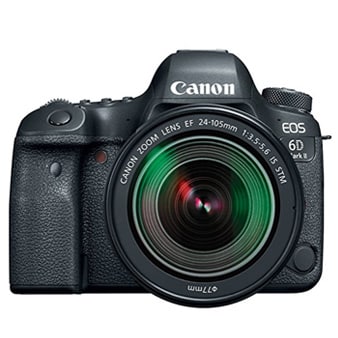
The Canon EOS 6D II competes with Nikon’s D750, but will cost you a little bit less.
Why is it good for weddings?
Let’s start of with the basics. The full frame 26.2MP sensor has just enough resolution to let you print big, but not fill up your memory card in a second.
The ISO range expands up to 40,000 and it performs noticeably better than its 7 year older predecessor (kind of expected). It doesn’t go as high as the Nikon does, but we’re talking about a less than 1 stop difference.
The 6D II definitely doesn’t seem exciting when you compare it to other cameras on this list, but it gets the job done at the lowest price. It features a 45-point cross type AF system and Dual Pixel AF for video (better than regular video focusing).
It has a 3.0″ articulating LCD screen, shoots 6.5 frames per second and has a weather and dust-resistant body. Battery life is pretty good for a Canon camera with 1200 shots before having to recharge, and there’s support for Wi-Fi and Bluetooth.
If you are starting out fresh, we personally feel you can get more for your money with other models here, but if you specifically want to go with Canon because of their lenses, then the 6D II will be a fine option. Not bad at all, just not as good as what the rest offers, especially since the release of the 6D II was only in 2017 and we expected more.
You can buy it at Amazon or see more reviews here.
Last Updated on September 17, 2021 by Nick Voorhees
First and foremost, I’m a husband and father. Then professionally I’m photographer, designer, blogger, and Esty store owner. My homebase is near the stunning Wasatch mountains in Utah but I love traveling with my family as part of our homeschooling journey. I also love teaching and helping out others. My faith is one of the biggest aspects of my life and brings be a consistent joy that I haven’t found in anything else. My main blog is BestPhotographyGear.com and I strive to make photography simple for anyone looking to learn or find gear for their individual needs. By nature, I like to study, research, and analyze things and I use that help provide the best advice and reviews I can.

